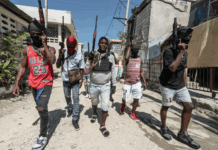Originally published at Morning Star on May 13, 2025
The latest headline on Haiti is that Trump is threatening to send Haitian gang leaders to Nayib Bukele’s Terrorism Confinement Centre, where 252 Venezuelans are currently kidnapped. On May 2, the State Department designated Haitian paramilitary gangs Viv Ansanm and Gran Grif as Foreign Terrorist Organisations and Specially Designated Global Terrorists.
The truth is that the paramilitary gangs are merely a symptom of the true problem plaguing Haiti — US and Core Group neocolonial rule. If the State Department was honestly interested in alleviating mass Haitian suffering, it would begin by jailing the true puppet masters, mainly themselves.
The US embassy, the Central Intelligence Agency, Colombian drug lords and the other overt and covert international actors are responsible for the flow of drugs and guns into the hands of these gangs of alienated youth sacking, raping and burning down what is left of Port-au-Prince.

The traumatisation of Port-au-Prince
Port-au-Prince, a capital city of the Western hemisphere, has been under siege by paramilitary gangs since at least 2021, the year of a massive social upheaval against neocolonialism. The capital of some 3.3 million is now an occupied city and a city on the run, the West Bank of the Caribbean.
The author stayed in different popular neighbourhoods of Port-au-Prince a year ago, parts of which were still bustling and liveable, before the sophisticated, drugs and arms-smuggling alliance called Viv Ansamn conquered more territory. This translates as “living together,” so named because the armed groups no longer fight against one another but have rather united to turn their guns for hire onto the defenceless and voiceless Haitian masses. In a play on words, Haitian intellectual and spiritual leader Ezili Danto calls Viv Ansanm Viv Nan San, or “living in blood.”
Over one million Haitians now live as refugees in their own country.
The gangsterisation of Haiti
The Haitian intelligentsia and everyday people understand that this is a “co-ordinated and organised assault on the nation’s centuries-long quest for self-determination.” They speak of the ongoing “gangsterisation” of their homeland to demobilise the popular movement that has fought tooth and nail against the PHTK government since secretary of state Hillary Clinton first installed benighted criminal Michel Martelly as president in May 2011.
According to hundreds of Haitian leaders and their families that the author has talked to, the Haitian and US bourgeoisie have armed and unleashed their warlords, child soldiers and mercenaries for hire on an unarmed populace. Haitian scholars and activists Mamyrah Douge-Prosper, Ernst Jean-Pierre, Georges Eddy Lucien and Sabine Lamour meticulously document this consistent campaign of violence in their prodigious study of the paramilitary groups, Haiti’s Long Struggle: Military occupation, gang violence, and popular uprising.
“Between November 2018 and March 2024, ‘gangs’ led over 25 massacres and other armed attacks, involving the murder of over 1,500 people, the collective rape of over 160 girls and women, the disappearance of dozens of people, the maiming of hundreds of people, and the destruction of more than 450 homes, resulting in the internal displacement of more than 500,000 people. While at the beginning of this period, these armed groups acted in isolation and in competition with one another, in August 2020, nine armed groups federated under the leadership of former police officer Jimmy Cherizier, an effort commended by Haiti’s National Commission of Disarmament, Dismantlement and Reinsertion. In January 2024, Cherizier consolidated the rest of the gangs in the capital to launch a ‘revolution,’ taking control of the international airport surroundings to prevent Henry from returning to Haiti after his trip to Kenya. Over the next few months, the group bulldozed police stations and prisons, burned down public hospitals, universities and libraries, and killed several hundred people. They destroyed the Superior Court of Accounts and Administrative Disputes offices where government spending receipts are archived, including the dossiers concerning the PetroCaribe arrangement with Venezuela.”
Analysts of Viv Ansanm put the word “gang” in quotation marks because, as popular radio host Rudy Sinon points out, the old gangs had “kreyol guns, like .38 Smith and Wesson Specials or .45 automatic handguns. These paramilitary units have the most sophisticated weapons of war to seize territory, prevent any resistance and make the police scatter.”
Sinon, the voice of Kanapeve, is both irate and deeply sad: “We can’t even bury our dead when they attack us and uproot us. We have to abandon the dead against our traditions.” While Sinon laments the enormous loss of life, assault on infrastructure and the burning of nature, which he shows for 10 minutes during this broadcast, he and millions of others are doing everything to defend the last communities that are still resisting.
Defend Kanapeve
Kanapeve has traditionally been a relatively privileged and secure section of the capital city. It is now under siege, surrounded by the mercenaries of Izo and Ti Lapli, two warlords who specialise in cocaine trafficking and kidnapping.
A former police officer, Jimmy Cherizier, or “Barbecue,” is the leader of the violent gang alliance now in control of some 85 per cent of Port-au-Prince. A France 24 documentary, The Iron Grip of the Gangs, shows the contrast between the displaced and traumatised residents and their occupiers who set up mansions and pool houses over the ashes and unburied. ImagINAN, named after a Haitian lwa (god or goddess), gives a voice to displaced Haitian organic intellectuals to reflect on the inner dynamics of the armed groups.
Speaking on the condition of anonymity, Walno, a young lawyer and community leader in Kanapeve, talked about the importance of ongoing protests and unity against paramilitary violence. The crowd of hundreds of thousands of refugees and frustrated inhabitants chanted, “Kanapeve will not fall like Solino or Kafou Fey. Kanapeve will not be lost territory to the gangs.” Solino and Kafou Fey are massive complexes with neighbourhoods of tens of thousands of families that recently fell to Viv Ansanm looting, raping and burning.
There have been many mass protests against the security crisis, with the main demand being that the Haitian state defend the defenceless communities. The hungry and trapped sea of humanity chanted for government officials to stop “the terrorists.” The kleptocracy in Petionville, the rich area of Port-au-Prince, plays lip service to the masses’ needs, forcing citizens to take justice into their own hands.
As the gangs expanded, the masses of Kanapeve captured and burned 10 suspected gang members in 2023, inaugurating the citizens’ self-defence movement, known as Bwa Kale. The foreign occupation, so highly touted by former president Joe Biden, secretary of state Marco Rubio and lackey President of Kenya, William Ruto, mostly stays clear of the paramilitary aggression, though two Kenyan police officers have recently been killed by Viv Ansanm.
Veterans and survivors of four US invasions and occupations in the past century, Haitians distrust foreign powers, who they see as the true sponsors of the gangs. Trapped between death squads, occupying mercenaries and a fractured, corrupt Haitian state, who are the masses supposed to turn to?
If Trump, Bukele and other mouthpieces of imperialism want to send the true terrorists to Cecot, the Spanish acronym for El Salvador’s Terrorism Confinement Centre, they would have to begin by incarcerating themselves and dismantling the very colonial machinery that has the Haitian masses trapped between two forms of occupation, both spawned by US foreign policy.





